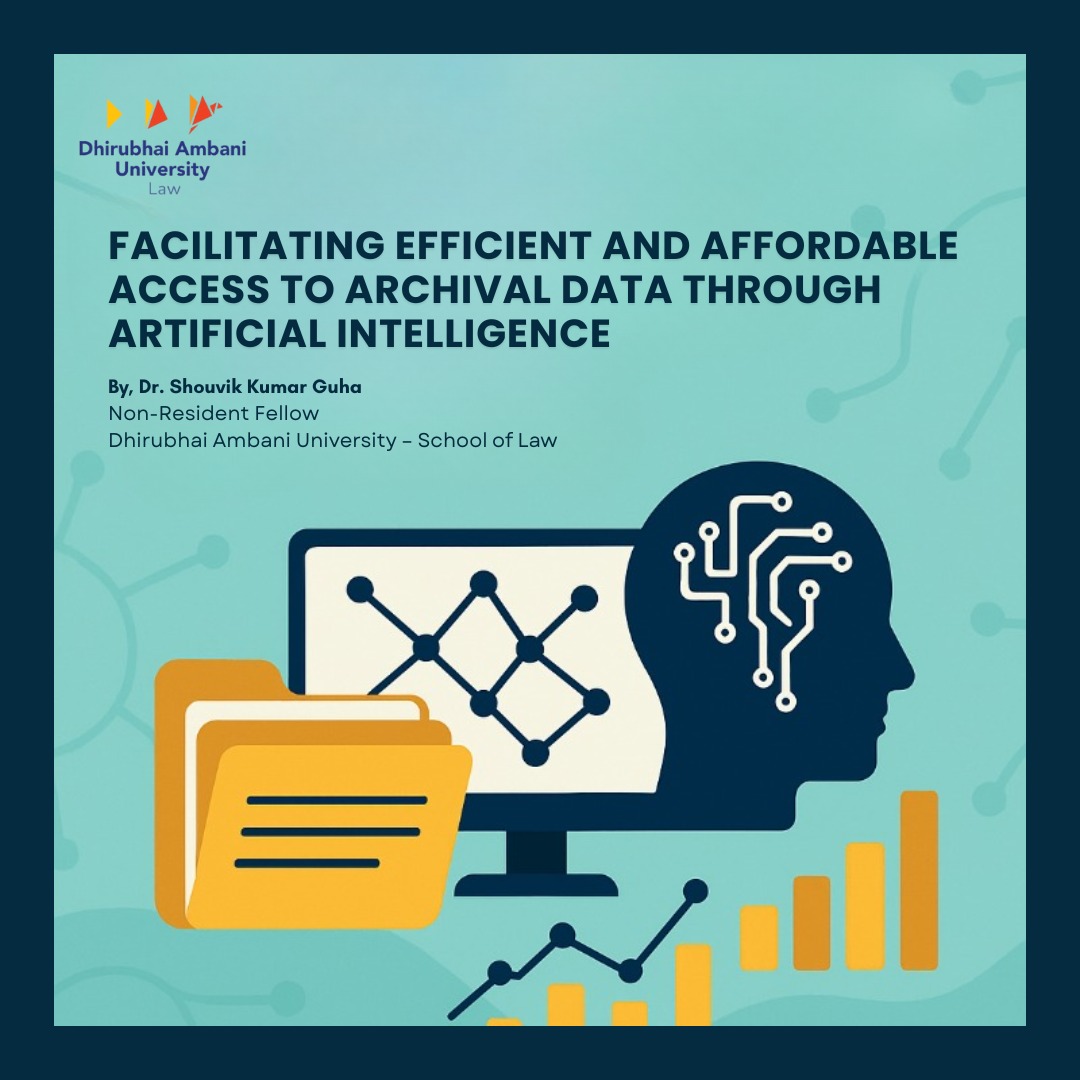
Dr. Shouvik Kumar Guha
From preserving stories to saving history, culture, and information for posterity –the role that the digital archives of a country plays towards building the foundation of the country and allowing future learners, researchers and policy-makers to have an in-depth thematic understanding of the collective experience of the nation, remains undoubtedly pivotal. The preservation, secure and affordable accessibility, and sustainable usage of archives that are born digital, as well as the digitalised versions of print archives, are therefore of paramount importance. It is in this regard that emerging technologies like artificial intelligence (“AI”) can perform a crucial intervention.
Digital archives of historical data as well as government records have a wide range of utility if they are made readily accessible; however, there are many reasons why such access often remains elusive to the general public –privacy, intellectual property rights, confidentiality, national security concerns, technological limitations, as well as resource constraints leading to disorganisation are but a prominent few of those. While AI cannot offer ready-made solutions to all of these concerns, yet it may be used with varying degrees of effectiveness to address at least some of these.
For instance, it is possible to use algorithms to separate sensitive archival data from less sensitive data, even on a massive scale, provided that the parameters of sensitivity determination can be determined with a minimum degree of objective specificity. Even when data cannot be traced back to its origin for absence of relevant metadata, AI-based systems can be used to regenerate such metadata with considerable accuracy under certain circumstances; moreover, even lost or incomplete data from archives including languages or dialects can be traced back from metadata using AI-based tools.
Where conventional digital searching methods including keyword search and Boolean search may turn out to be less than effective in massive archival datasets, AI models based on machine learning and Natural Language Processing may prove to be of utility. Different archival datasets, irrespective of their size, can be subjected to effective holistic AI analysis that may in turn unearth hitherto unexplored connections between them –techniques like data visualisation, pattern and anomaly recognition, and adaptability to hybrid datasets may be leveraged to such end.
When large-scale datasets containing complex and voluminous data such as those from government records need to be effectively studied and analysed, approaches such as distant viewing combined with close reading and technology-assisted review may help the researcher with efficient and expedited identification and appraisal of relevant data. At the same time, focused usage of generative AI can help in archival management by assisting in narrative construction when it comes to determining why certain data may be withheld on grounds that act as exceptions to the right to information.
Filtering data via applicable computational methods or extracting demographic data from archival census datasets with social justice goals in mind can also be tasks that may benefit from the involvement of AI –with the Sixteenth Census of India around the corner, such possibilities inevitably gain considerable significance in terms of the potential that they represent. Similarly, in the ongoing important quest for digitisation of newspaper archives, complications related to intellectual property rights of orphaned visual data can be addressed through metadata recovery, while anonymisation of identifiable individuals recorded among such data, detected via facial recognition technology, can mitigate privacy concerns, thereby facilitating accessibility to the treasure trove that such archival data represent.
Museum archives in India and the priceless data that they contain can also benefit from AI-based intervention in ways more than one. For instance, while well-designed prompts can put Large Language Models to use helping museum collections become more accessible and meaningful to a wider range of audience, AI-assisted enhancement and refinement of existing data can fill in many a missing chapter in such collections, including cultural heritage records, thus facilitating greater access and dissemination.
Yet while the use of AI-based solutions in the context of archival data management may therefore pave the way for progress and accessibility, such usage is not entirely devoid of associated concerns related to bias, opacity, ethical tensions including trustworthiness, accountability, equity and inclusivity in the socio-economic and cultural contexts, to name a few. Open access data archives available in the public domain can prove to be invaluable training resource for AI models, but such training ought to take into consideration valid concerns related to provenance of training data, the process of producing and curating knowledge from data and the digital labour that goes towards such process. Data visualisation using AI may take time to earn precious trust from the researchers. Even more importantly, the scope of unregulated amplification of the bias and misrepresentation that indiscriminate AI usage may yield should not be ignored, particularly considering the trust that archival data from sources like government records, newspapers and museums tend to elicit among the general psyche of the population. In order to navigate the ethical complexities of such usage so as to strike a balance between innovative solutions to existing problems relating to data archives and prudent use thereof, one therefore ought to design for models involving adequate human supervision and features of inclusivity, representativeness, transparency and accountability built in the training and deployment processes for responsible AI.
Keywords:
Data, archive, accessibility, AI, digitisation, data visualisation, pattern recognition, technology-assisted review, archival management, computation, anonymisation, computation, bias, trust, responsible AI, data provenance, intellectual propertyReferences:
- Arias Hernández, R., Rockembach, M. Building trustworthy AI solutions: integrating artificial intelligence literacy into records management and archival systems. AI & Soc (2025).
- Baron, J.R. Using AI in providing greater access to the U.S. government’s email: a progress report. AI & Soc (2025).
- Jaillant, L., Zhao, L. Introduction: When data turns into archives: making digital records more accessible with AI. AI & Soc (2025).
- Jaillant, L., Rees, A. Applying AI to digital archives: trust, collaboration and shared professional ethics. 38(2) Digital Scholarship in the Humanities (2023).
- Reusens, M., Adams, A. & Baesens, B. Large Language Models to make museum archive collections more accessible. AI & Soc (2025).
- Vetter, M.A., Jiang, J. & McDowell, Z.J. An endangered species: how LLMs threaten Wikipedia’s sustainability. AI & Soc (2025)
